Taking care of your potted plants after a cyclone and rains
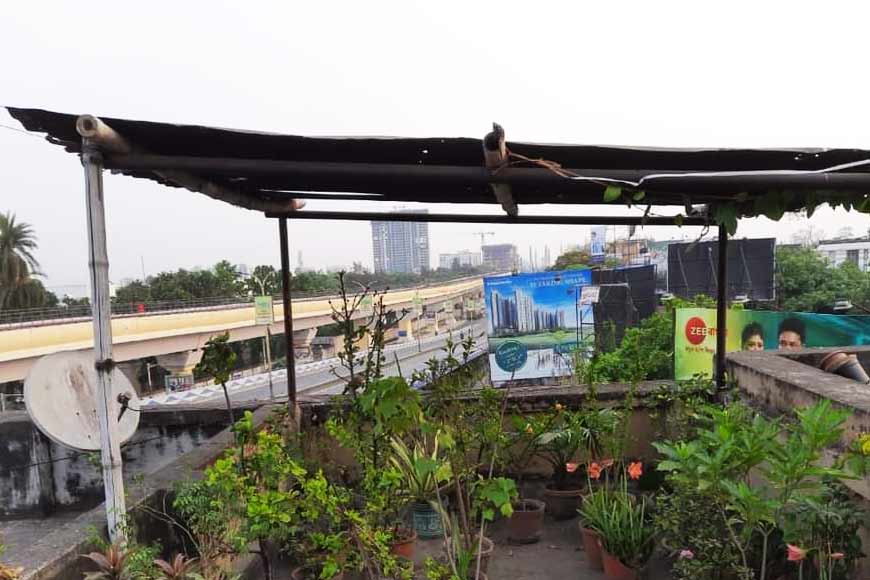
Protecting plants specially roses and hibiscus from rains using temporary shade
‘Gone with the Wind!’ … literally many of our plants on our terrace had been swept away by Cyclone Amphaan a couple of years back along with many whose pots were broken to pieces. Since then, every time a cyclone is on the radar, we take safety precautions in advance so as to save as many plants as we can,” said septuagenarian avid gardener and school principal Madhugiti Mitra, who grows everything from mangoes to vegetables to flowers and orchids in her garden in New Alipur. While Susmita Ghosh, another enthusiastic tree grower from Bhowanipur and member of ‘To Trees with Love,’ a tree community that spreads awareness on plants and tree plantations, believes not just storms and cyclones, but even heavy rainfall that has become very common in West Bengal these days, thanks to climate change can wreak havoc to a garden. Ghosh points out: “Just like wind, rains can cause severe damage to the roots and fruits of plants. Continuous wet spells can literally kill small plants and saplings. We have to be extra cautious during heavy showers too, even if they are intermittent, like during Norwesters, which are very common in West Bengal during summer.”
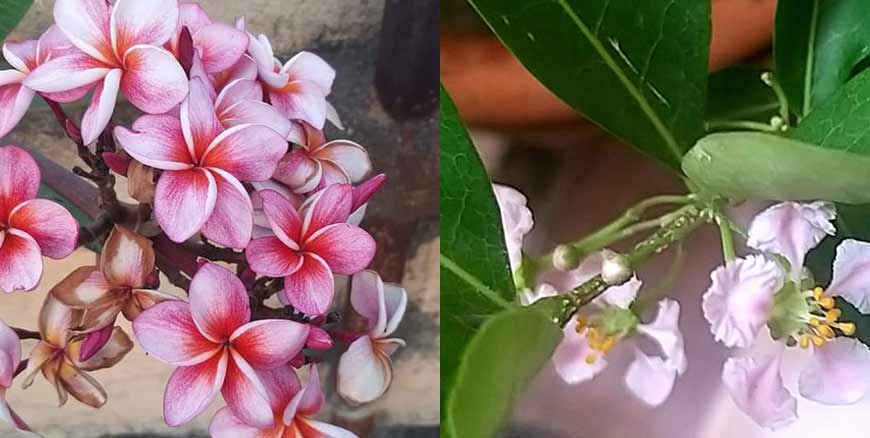 Flowers like Champa and Cherry Blossom get severely damaged and turn brown due to excessive rains
Flowers like Champa and Cherry Blossom get severely damaged and turn brown due to excessive rains
True as Mitra and Ghosh said, for terrace planters, potted plants are more vulnerable than trees and shrubs and hence need a proper guidance as to how they can be protected from adverse climate. Too much water is as harmful as too little water, so is lack of sunshine. Succulents and orchids can die if the weather is too humid. “I lost all my precious orchids to the cyclone though I had kept them indoors during the storm and rains. It is because they got too much moisture and water that caused rotting,” added Mitra sadly.
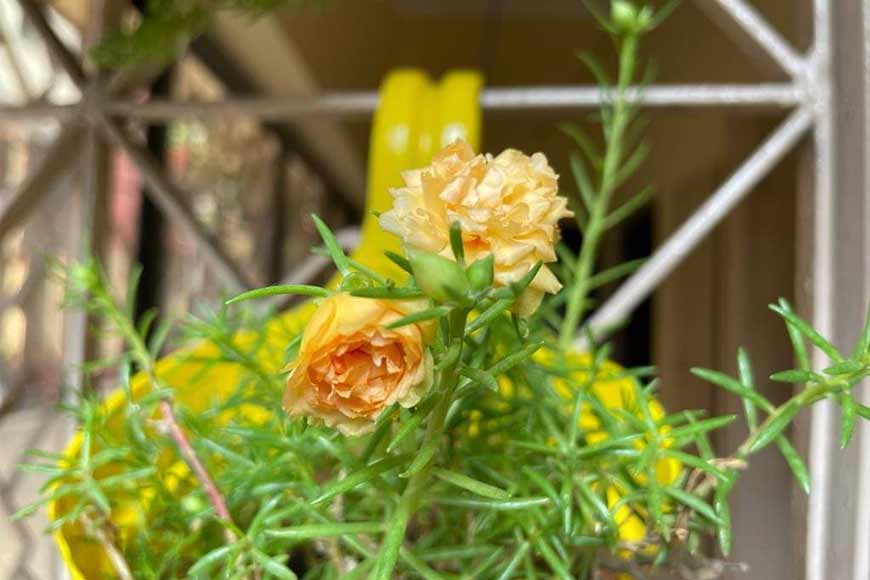 Hang herbs on the grill so that water drains out
Hang herbs on the grill so that water drains out
Sanhita Basu, a teacher and a nature lover who grows different kinds of hibiscus on soil said how storms and rains can help in breeding of plant pests that can cause terrible damage to flowering plants like hibiscus and can kill the plant. Same with those who grow vegetables these days. Some plants like Adenium, Bleeding Heart, Bouganville need very little water, else they will rot. “Before any rains these plants need to be pushed indoors. Even a few spells of shower can kill such plants,” said Ghosh.
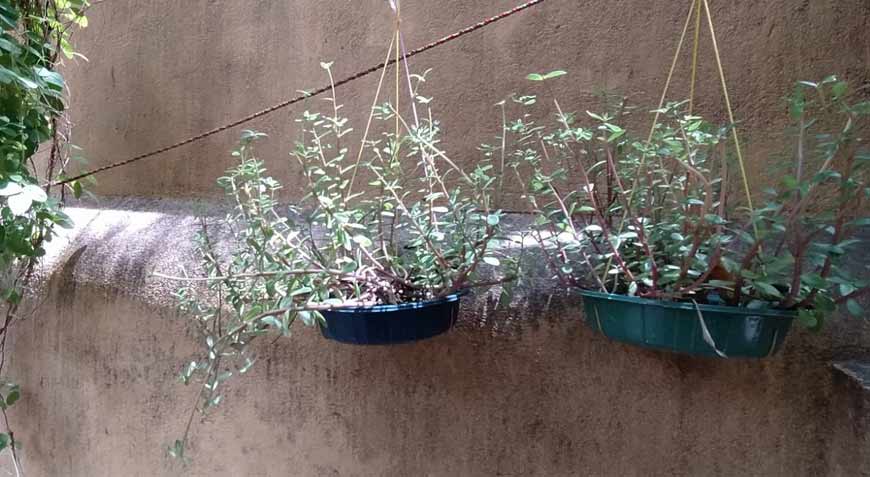 Hang soft herbs like Purtolicca to save them from root rot
Hang soft herbs like Purtolicca to save them from root rot
So what is the way out? How can the home planters take precautions to save their house plants? Here are a few easy steps to do so:
• A 3-inch layer of organic mulch over the root of a plant to protect its roots from rain. Keep the mulch at least 3 inches from the plant's foliage.
• Overturn empty planter pots or tie a sheet a few inches above the plants to provide a physical barrier against the elements like wind and rain. But remember to remove them once the rains are over.
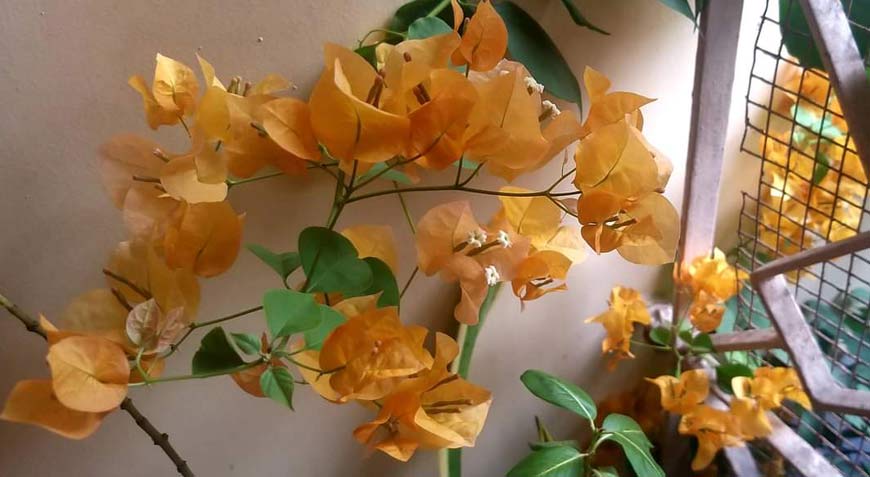 Plants like Bouganville taken indoors to save from the rains
Plants like Bouganville taken indoors to save from the rains
• Wrap larger plants and shrubs with strong ropes to help them withstand the storm. You can alternately anchor a newly planted tree or shrub with three or four stakes before a storm. Pound 2- to 3-foot-long stakes about 20 inches into the soil, slanting them away from the plant. Attach the shrub to the stakes.
“In Chittaranjan we always face the extreme effects of cyclone as there is a lot of open area still left. I secure my potted plants by placing them along the wall and covering them with large empty earthen pots, however sometimes the wind is so strong that it carries the whole setup. ‘Tie with Fabric ‘ is the best method for bigger plants like Gardenia and all. As for the bonsais and crotons we shift them inside the house. The climbers like jasmine and money plants should be tied in two or three segments. Lastly we should protect the smaller plants by fastening with the bigger ones. The hanging pots I unmount and place inside the house on the floor.”
HAIMANTI SENGUPTA
HOME PLANTER WITH A HUGE GARDEN FROM CHITTARANJAN
• Move container plants including hanging baskets into the house, garage or greenhouse to protect them from storm damage. If a potted plant is too large or heavy to move, protect it with covering in the same way you would protect a similar plant growing in soil.
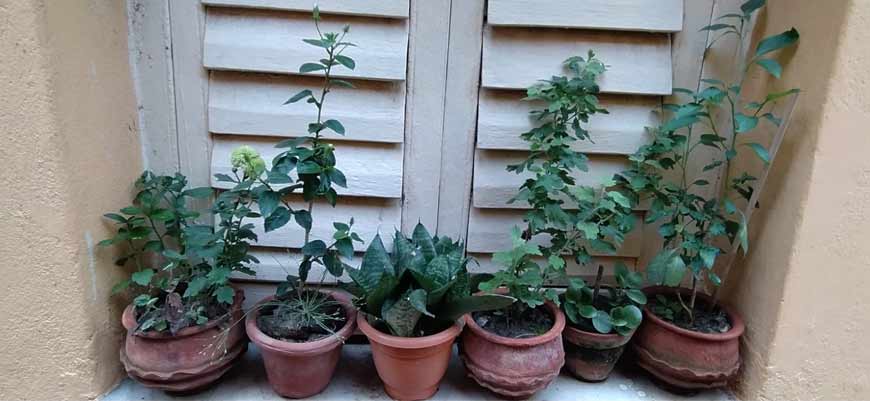 Pull the pots below windows and window shades before a storm approaches to.protect them.from direct wind gust
Pull the pots below windows and window shades before a storm approaches to.protect them.from direct wind gust
• For fruits or vegetables, keep your eye on the weather forecast on a daily basis. Harvest mature crops as quickly as possible when you get notice of a storm approaching and do not let water stagnate in the pots. Turn the pots upside down every time it rains to drain the water out.
• Protecting roots is very important. A simple preventative measure is to protect the roots of your plants from weather damage by spreading mulch as described above.
Most of the potted plants are placed along the parapet and on a heavy iron frame. There are grooves in the iron frame where these flower pots are placed. So they are already secured against heavy winds. Also I have a big fisherman's net which I put on top of those and tie with the iron frame when there is any cyclone warning. Tilt the big pots on the roof and lean those against one another and bring small pots inside. All the lights in my roof garden is solar powered. So bring those instruments inside the room. The big trees are already grown up to take care of themselves. Also suggest to keep some extra pots to replace the broken ones.
ARINDAM BANERJEE
Heavy rain can cause serious damage to plants. In the aftermath of a cyclonic storm or heavy rain, plants can appear half dead. It is not just potted plants, but even plants growing in the ground that can get damaged because of too much rain and the wind. Plants suffer stress and begin to droop. The water logging can cause yellowing of the foliage and root rot. The latter means the death of the plant. Added to all this is the risk of fungal infections in the plant's root system, which if left unattended will eventually kill the plant.
How to restore plants after the rains
• If the sun comes out the chances of your plants bouncing back to their original healthy selves are really good. But, that is not true for all plants. Fragile plants need extra attention. Plants that are left out in the open generally get flattened by the rain and wind lashing at them. In the process, some of the branches snap. They will not grow back and will have to be pruned. The rest of the flattened branches will prop back up, soon enough. Plants with tender branches and a flimsy main stalk will have to be staked. You might also need to use twine for added support.
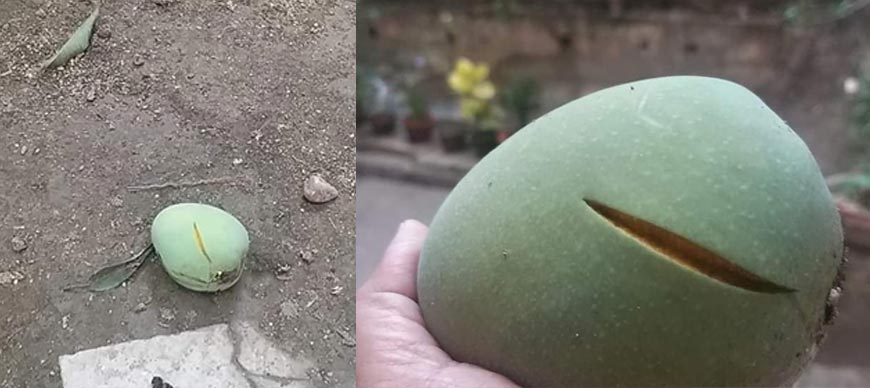 Mango fallen prematurely due to wind and slit into two
Mango fallen prematurely due to wind and slit into two
• Prune the plants, especially the weak and damaged branches. This helps as the plant can concentrate on directing nutrients and its energies in recouping from the trauma and a better chance to recover completely. Removing dying leaves and branches that will end up rotting on the plant will enhance growth and avert disease.
To save my plants from the harsh effects of the strong gale of a cyclone I try to shift some some of my plants indoor, and keep some pots in the reclining position.
PRANTIKA GHOSH
• Keep a watch on the plants even a week after the storm. If you notice the plant drooping or the foliage blackening or yellowing then you might have a problem at hand. Excessive rain might have caused root rot and to salvage the plant you need spraying of systematic fungicide.
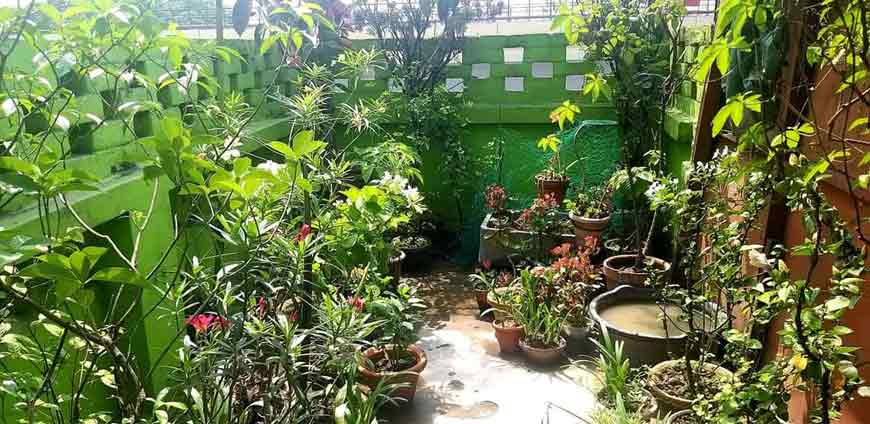 Take out plants in the sun after the rains to dry them
Take out plants in the sun after the rains to dry them
• Excessive rain can also destroy useful microorganisms present in the soil, which can have an adverse effect on the plant. It is an opportune time for pests and diseases to attack the plant. So some plants need to be repotted with a better potting medium – one that does not retain water. Use a container with ample drainage holes.
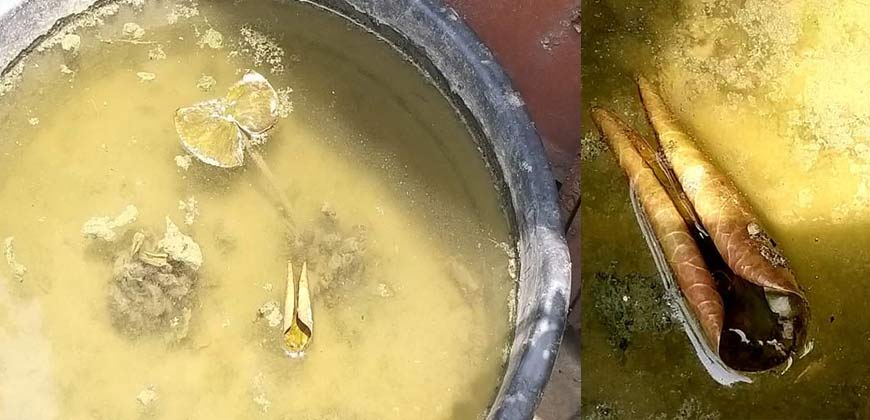 Aquatic plants like Shaluk need change of tub water after the rains as they turn muddy and can kill the plants
Aquatic plants like Shaluk need change of tub water after the rains as they turn muddy and can kill the plants
• Avoid over-watering after the rains. Water the plant once the soil is dry. Check the soil with your fingers, if it feels moist, do not water. Let the soil become relatively dry, before watering it.
• Do not feed the plant immediately after the rains. Wait for a few days and apply fertilizer or compost after you notice the plant looking stronger. Applying fertilizer on a plant that has been under stress would damage it further.











